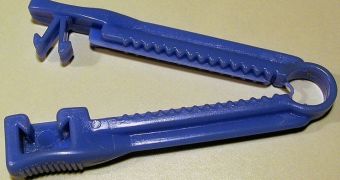New data recently made public appear to suggest that allowing a few extra moments between the moment of birth and the time when the umbilical cord is severed could bring additional health benefits to the newborn. At this time, it is standard practice for doctors to clamp the cord connecting the mother and her child in the first few minutes after birth. But an extensive review would seem to suggest that the best way to go would be to allow for the umbilical cord to stop pulsating on its own before clamps are used to cut it, LiveScience reports.
“Ob-gyns and parents should think about giving the cord blood to the baby. It only takes a few minutes,” explains University of South Florida (USF) professor Paul Sanberg, who was the lead researcher of the review article. The paper accompanying the study appears in the latest issue of the highly-regarded Journal of Cellular and Molecular Medicine. The USF team says that, when the current procedure was first set up more than 50 years ago, the therapeutic value of cord blood and its stem cells were still a mystery to science.
With the advent of new discoveries, they say, medical practices need to change too, with potentially amazing results. Allowing the newborn child to take in as much cord blood as possible could have a wide series of health benefits later on in life, Sanberg believes. “It is not just regular blood going in. It is nature's first stem cell transplant,” he explains. Umbilical cord blood stem cells can differentiate into any other kind of cell in the human body, and therefore have tremendous therapeutic potential. Some clinics in the world offer related services to new parents, who may chose to store this type of blood in a bank, for use later on in the baby's life.
Delayed cord clamping may have a host of positive consequences, the team leader explains, including reduced risks for developing conditions such as respiratory distress, chronic lung disease, brain hemorrhages, anemia, sepsis and eye disease. “Evolutionarily, there is clearly value for this,” he adds, giving numerous examples from the animal world. Here, most mammals allow for the cord blood transfer to be completed after birth, before severing the connection. “Only in the last half century or so has mankind started cutting the cord early,” he concludes.

 14 DAY TRIAL //
14 DAY TRIAL //